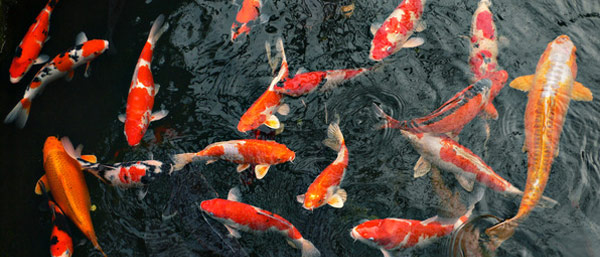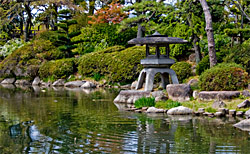
Pond Filtration

Ponds can rapidly become stagnant puddles full of algae and debris, which is fine if your pond's primary purpose is attracting local wildlife.
If you plan to keep ornamental fish, on the other hand, some sort of filtration is essential as they will not thrive in such an environment, not to mention the fact that you'd only see them when they emerge from the murky depths at feeding time.
Calculating a Pond's Size
Before choosing a pump or stocking your pond, it's necessary to calculate your pond's volume. For square and rectangular ponds, multiply the length by the breadth by the (average) depth to get a figure in cubic feet.
For circular and oddly shaped ponds, calculate the surface area using the appropriate equations, in the case of a circular pond this is half the diameter squared times 3.14. Then multiply the area by the average depth. To convert cubic feet to gallons, multiply the figure by 6.23. Alternatively, fill the pond using a large bucket and just count the buckets of water.
Choosing a Pond Pump
As well as volume, take a note of the number and species of fish you wish to keep, the amount of sunlight the pond receives and whether there are any overhanging trees. The more fish, the more sunlight and/or the more debris that falls in, the more powerful a filter you need.
If you have a pond that's partially shaded and only lightly stocked with small native pond fish, you can probably get away with the smallest, least powerful (and cheapest) filter for the volume. Other ponds, notably koi ponds, might need more robust systems. If uncertain, ask your filter supplier.
Types of Pond Pumps

Filtration systems use two processes: biological, using a population of micro-organisms to break down toxins, and mechanical, which basically just sieves the water. Entirely mechanical systems tend to be the cheapest and don't need to be on all the time. Biological ones do.
Then there are four types of filter. Internal filters are similar to those used in aquariums and you just stick them in the pond. They are really only suitable for small ponds with no special requirements.
Of the external filters, the easiest to maintain are the pressurised filters, which are also the least powerful. xternal pump-fed and gravity-fed filters are your options for ponds requiring substantial filtration, but note that the latter needs a purpose-built pond.
Pond Filtration Media and Maintenance
A range of filtration media exist, mostly sponges and foams of various sorts. Generally, use the type or types recommended for your pump. A biological medium, which forms a habitat for microorganisms, stays put whereas a mechanical one, whose purpose is to trap debris, needs changing periodically. Some types should be rinsed out at intervals. Do this in a bucket of pond or rainwater, not tap water. Aside from that, pond filtration systems do not need a great deal of maintenance, although it is advisable to get an electrician to check yours once a year.